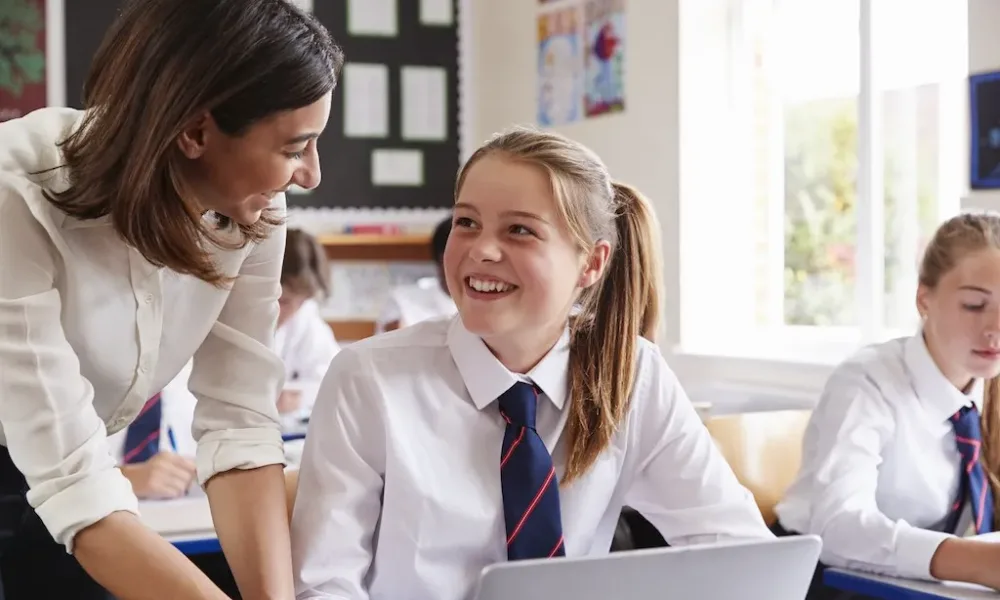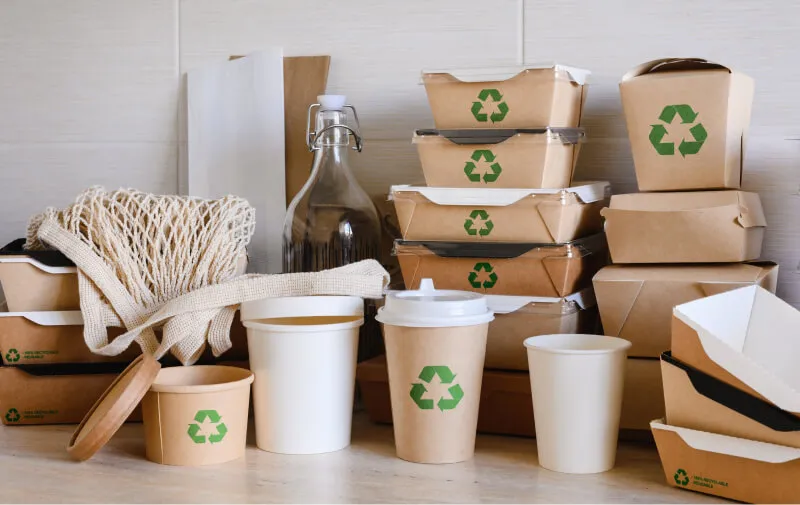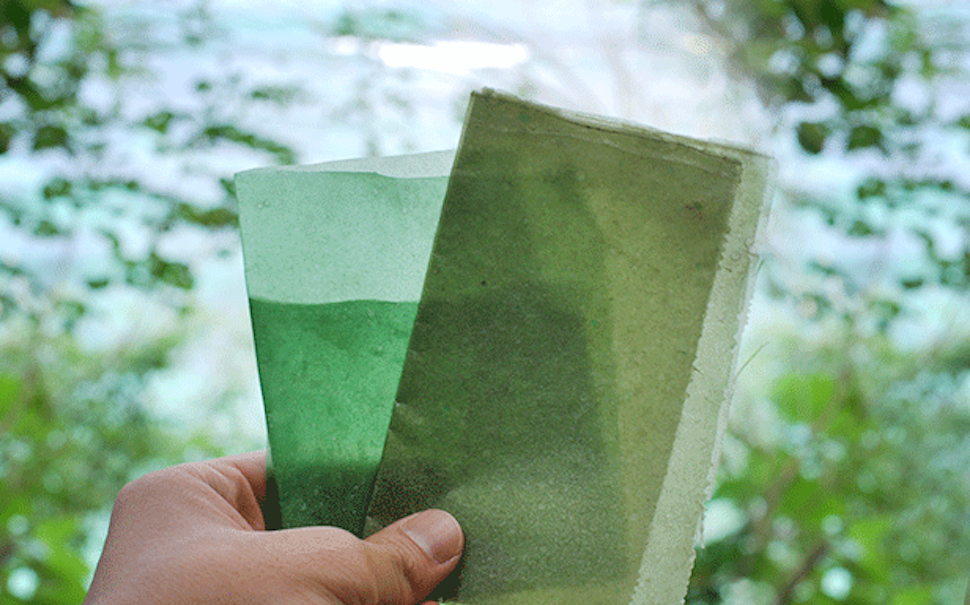Good news often arrives quietly—through the enthusiasm of young minds, the kindness of communities, or the creativity of people who see possibility where others see problems. In one coastal Canadian town, an inspiring story is unfolding in real time. A group of students has created a new form of biodegradable packaging from local seaweed, and local businesses are lining up to use it.
This is not just an environmental win. It’s a story of innovation, collaboration, empowerment, and hope—a reminder that the solutions to big problems often begin with small, curious questions.
In this long-form good-news article, we take you inside the journey of these students: how they built their idea, the science behind seaweed packaging, the businesses that believed in them, and why this matters for the planet.
Table of contents
- A Classroom Spark Becomes a Real-World Impact
- Why Seaweed? A Natural Material With Superpowers
- The Experimentation Phase: Trial, Error, and a Lot of Seaweed
- From Prototype to Product: The First Real Test
- Local Businesses Step Up: A Community Believes in Its Youth
- The Students’ Perspective: Pride, Hope, and New Possibilities
- The Science Behind Their Innovation
- The Bigger Picture: Why This Innovation Matters
- Community-Wide Impact: Everyone Benefits
- The Future of the Seaweed Packaging Project
- The Heart of the Story: Why This Good News Matters
- Conclusion: A Brighter Future Grows From Simple Ideas
A Classroom Spark Becomes a Real-World Impact
The story began in a high school science class, where the teacher challenged students to design a project that could address a real environmental issue affecting their community. In this seaside region of Canada, the impact of plastic pollution is visible: beaches littered with plastic wrappers, marine life endangered by microplastics, and local businesses struggling to reduce their environmental footprint.
The students felt a deep connection to the ocean—they grew up near it, played by it, and saw firsthand how pollution affected it. They wondered:
What if packaging didn’t have to harm the ocean?
What if it could actually come from the ocean itself?
This curiosity led them to experiment with a material they saw all around them: seaweed.
Why Seaweed? A Natural Material With Superpowers
Seaweed is often overlooked, drifting with the tide or washed up on the shore. But scientifically, it’s a powerful material full of potential:
- It grows naturally without fertilizer or freshwater.
- It absorbs carbon dioxide at exceptionally high rates.
- It regenerates quickly and sustainably.
- When processed correctly, it can become flexible, durable, and biodegradable.
Some industries around the world have begun exploring seaweed-based plastics, but it’s still a developing field. For these students, that meant one thing: a big opportunity to innovate.
The Experimentation Phase: Trial, Error, and a Lot of Seaweed
The students spent weeks gathering different types of local seaweed. They tested textures, colors, and compositions. Their classroom turned into a mini-lab full of drying racks, mixing bowls, improvised molds, and the distinct salty smell of the ocean.

They tried countless formulas:
- Seaweed alone
- Seaweed mixed with natural starches
- Seaweed blended with plant-based fibers
- Seaweed fused with biodegradable binding agents
Every batch taught them something new. Some mixtures cracked. Some were too soft. Some broke down too fast. But with persistence—and a lot of messy hands—they finally found a formula that met all their goals:
✔ Strong enough to hold items
✔ Flexible enough to be molded
✔ Fully biodegradable within weeks
✔ Made 100% from natural, local materials
Their teacher recalls the moment the successful sample dried:
“They held it up and everyone just stared. You could see it—this wasn’t just a school project anymore. They had actually created something useful.”
From Prototype to Product: The First Real Test
Once the final formula was ready, the students built prototypes: small food containers, wrapping sheets, and thin packaging films. They designed them to replace common plastic items like takeout boxes and sandwich wraps.
To see how the packaging held up, the students conducted a series of tests:
- Heat testing for warm food
- Moisture exposure testing for wet products
- Weight testing to ensure strength
- Degradation testing to confirm compostability
To their excitement, the packaging performed far better than expected. It held food without leaking, withstood typical handling, and broke down naturally within weeks when placed in soil or compost.
The students’ project report was impressive enough to catch the attention of the school board, local environmental groups, and—most importantly—local businesses.
Local Businesses Step Up: A Community Believes in Its Youth
Small businesses often face the challenge of wanting to go green but lacking affordable, accessible alternatives to plastic packaging. The students’ seaweed packaging arrived at the perfect moment.
Several businesses volunteered to pilot the new product, including:
- A local café that wrapped pastries in the seaweed sheets
- A bakery that used the containers for cookies and brownies
- A seaside gift shop that used the packaging for handmade soap and small gifts
Customers loved it. Many were delighted to learn that their packaging wasn’t just biodegradable—it was made by local students, using local seaweed.
Some customers even asked to keep the packaging to show their children, turning it into a teaching moment about sustainability.
The businesses, in turn, saw a boost in community goodwill. One café owner shared:
“People appreciate when we support local eco-friendly initiatives. It’s good for business and great for the planet.”
The Students’ Perspective: Pride, Hope, and New Possibilities
For the students, seeing their creation in real shops was life-changing.

One student said:
“It felt surreal. We walked into the café and there it was—something we made with our own hands. It made us want to do even more.”
Another added:
“It’s easy to feel powerless about climate change. But this showed us that small actions can add up.”
Their project has inspired other classes at the school to take on sustainability challenges. Some students have even expressed interest in pursuing environmental engineering, marine biology, or ecological design.
The Science Behind Their Innovation
The students’ packaging relies on a type of seaweed rich in alginate, a natural polymer that forms strong, flexible films. Alginate is already used in some medical and food applications, but processing it into durable packaging requires careful balancing of:
- water ratios
- heat
- drying time
- natural additives for strength
- natural plasticizers for flexibility
Their ability to achieve this in a classroom environment is especially impressive.
The final material is:
- Fully compostable
- Non-toxic
- Pet-safe and marine-safe
- Odorless after processing
- Food-safe
- Low-carbon to produce
Because seaweed rapidly regenerates, the environmental footprint of harvesting it is far lower than traditional crops used for bioplastics.
The Bigger Picture: Why This Innovation Matters
Plastic pollution is one of the biggest environmental threats today. Globally, we produce over 400 million tons of plastic waste each year, and about 14 million tons end up in the ocean.
Innovations like this are not just clever—they’re necessary. Biodegradable packaging provides:
- Less landfill waste
- Lower carbon emissions
- Safer oceans and waterways
- Healthier ecosystems
- Cleaner communities
And when these innovations come from young people, it gives the world something just as vital: hope.
Community-Wide Impact: Everyone Benefits
The student project sparked a ripple effect:
- Local businesses moved closer to plastic-free operations.
- Parents and families became more aware of eco-friendly options.
- Tourists took an interest in the community’s sustainability efforts.
- Local media highlighted the project, giving it regional exposure.
- Environmental groups reached out to support further development.
The excitement even sparked discussions about creating a formal youth-led startup to refine the product.
The Future of the Seaweed Packaging Project
While still early, the future looks promising.

The students hope to:
- refine the formula for mass production
- work with local seaweed harvesters
- create new packaging shapes and weights
- partner with more small businesses
- apply for environmental innovation grants
Their school is considering building a dedicated eco-innovation lab so future students can continue the work. There is even talk of collaborating with a nearby college that specializes in sustainable design.
What began as a simple science project may soon become a model for communities across Canada—and perhaps beyond.
The Heart of the Story: Why This Good News Matters
In a world often overwhelmed by negative headlines, this story offers something rare: proof that optimism paired with action can create real change.
The story of these students is uplifting not because it’s extraordinary, but because it’s so wonderfully human:
- Young people using creativity to solve real problems
- A community supporting its youth
- Businesses taking steps toward sustainability
- Nature providing solutions when we look closely
It reminds us that innovation doesn’t only come from big labs or corporations—it often starts in a classroom, with young minds who believe a better future is possible.
And perhaps most importantly, it shows that protecting the planet is not a distant dream. It is something we can build, one small idea at a time.
Conclusion: A Brighter Future Grows From Simple Ideas
The students’ seaweed packaging project is more than good news—it’s a beacon of what’s possible when imagination, science, and community come together.
Their success proves that:
- Sustainability can be local.
- Young people are powerful change-makers.
- Communities thrive when they support innovation.
- The solutions to big environmental problems may already exist around us—sometimes washed up on a beach.
As the students continue to refine their invention, one thing is clear: they’ve already succeeded in inspiring their community and setting an example for the world.
And in times like these, that’s the kind of good news we need.
